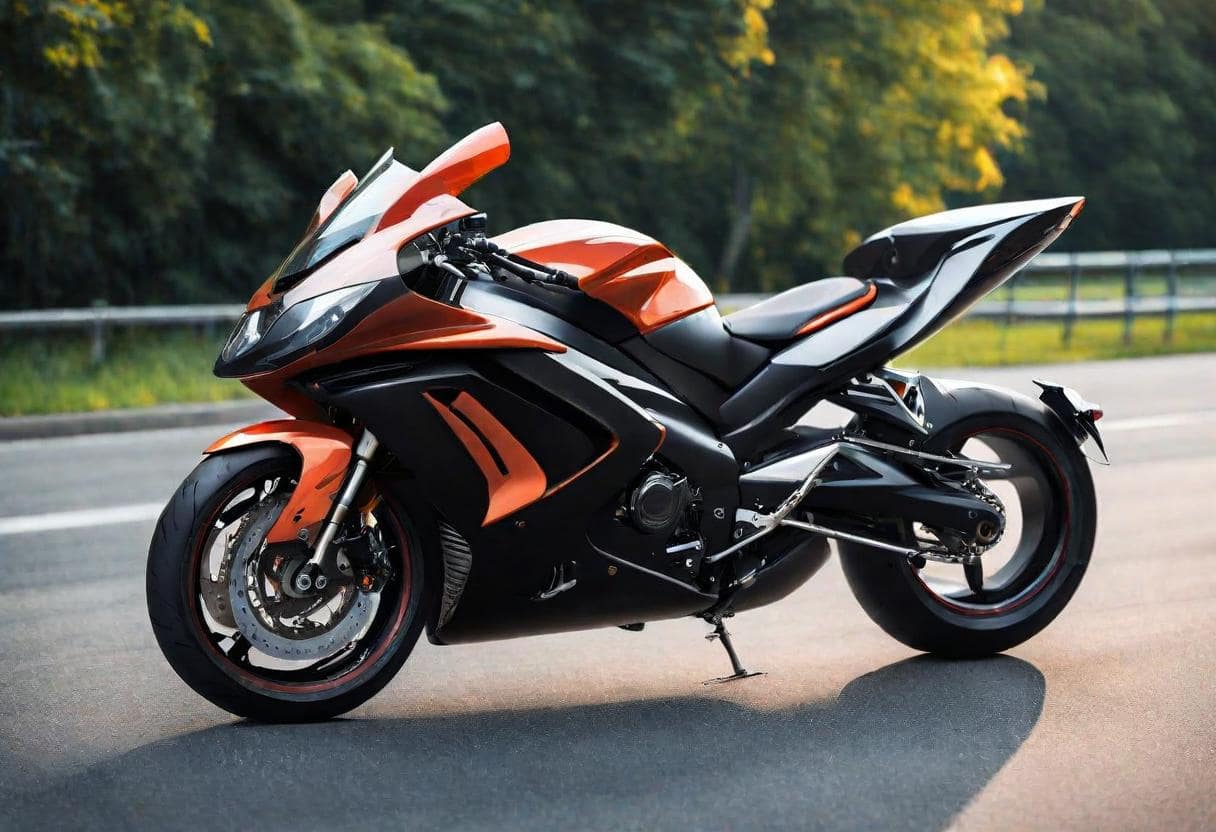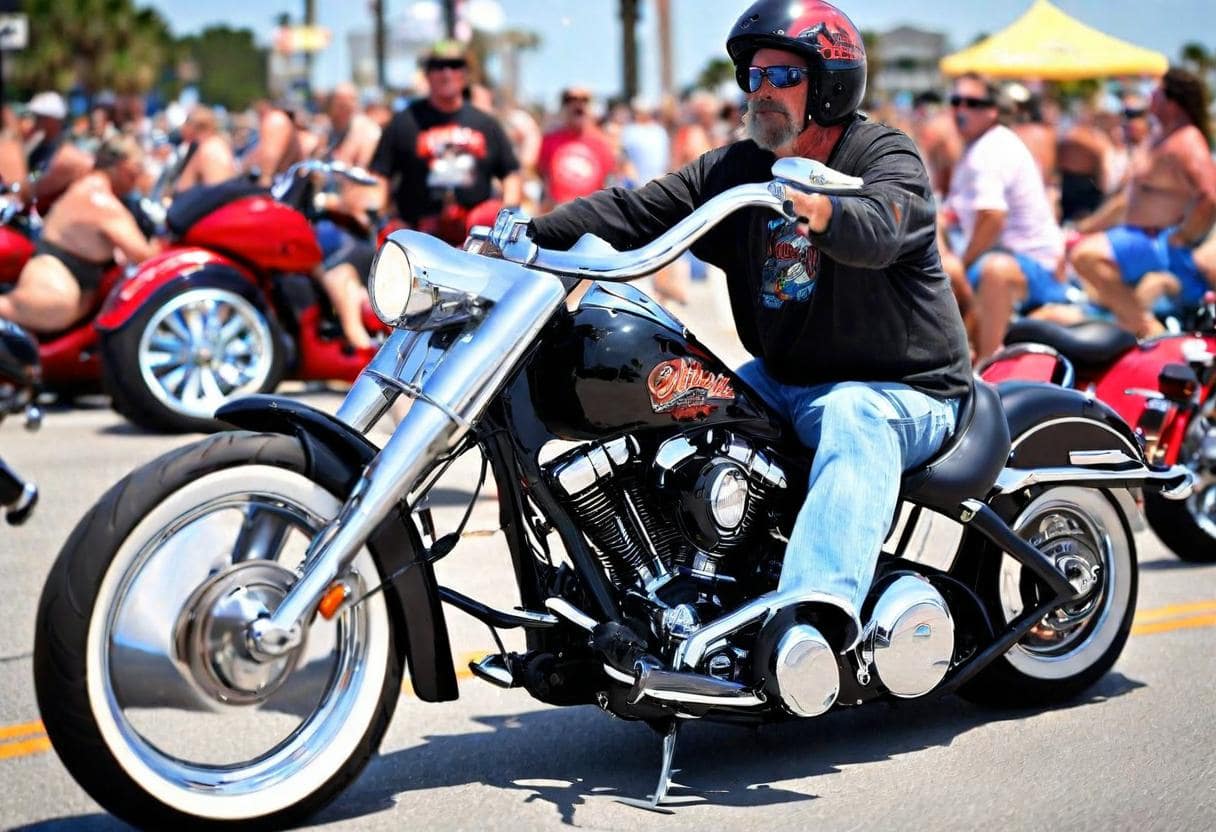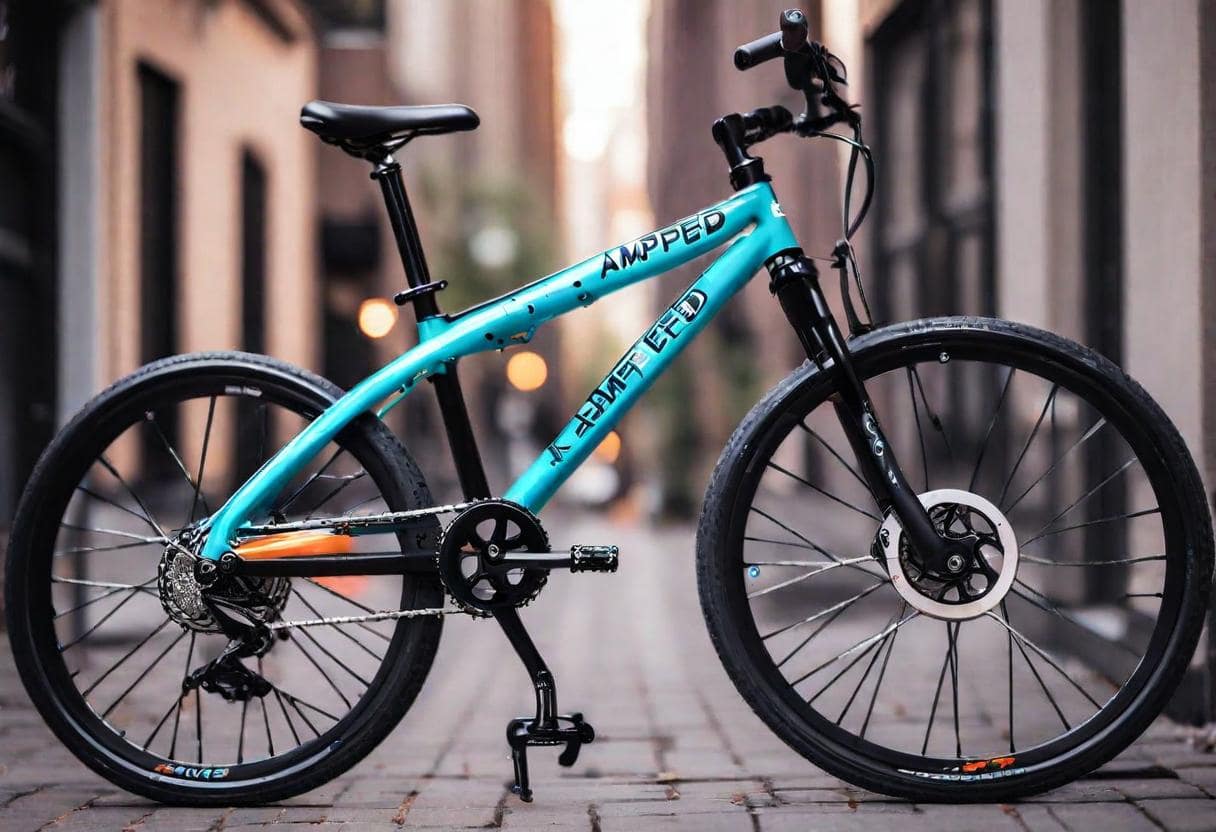Introduction to Fat Tires for Motorcycles
Fat tires have emerged as a revolutionary choice for motorcycle enthusiasts, transforming the way riders approach different terrains and riding styles. These specialized tires, characterized by their wider profile and robust construction, offer a myriad of benefits over conventional motorcycle tires. Whether navigating challenging off-road trails or cruising along urban streets, fat tires provide riders with enhanced traction, stability, and control, revolutionizing the motorcycle riding experience.
Advantages of Fat Tires
Increased Traction
One of the most significant advantages of fat tires is their unparalleled traction on various surfaces. Unlike standard motorcycle tires, fat tires boast a larger contact patch with the ground, allowing for superior grip and traction. This increased traction is particularly beneficial when riding on loose gravel, mud, sand, or other slippery surfaces, where traditional tires may struggle to maintain traction.
Enhanced Stability
Fat tires contribute to enhanced stability, providing riders with a greater sense of confidence and control, especially during cornering and at higher speeds. The wider profile of fat tires results in a larger footprint on the road or trail, distributing the motorcycle’s weight more evenly and minimizing the risk of skidding or loss of control.
Improved Handling
Another notable advantage of fat tires is their exceptional handling characteristics. Designed to offer responsive and predictable performance, fat tires enable riders to maneuver through diverse terrain with ease. Whether navigating tight turns on winding roads or negotiating obstacles on off-road trails, fat tires deliver unmatched handling capabilities, enhancing the overall riding experience.
Types of Fat Tires
Off-road Fat Tires
Off-road fat tires are specifically engineered to tackle rugged terrain and challenging off-road conditions. These tires feature aggressive tread patterns and durable construction, providing riders with optimal traction and durability on dirt, rocks, mud, and other uneven surfaces. Off-road fat tires are a popular choice among adventure riders and off-road enthusiasts seeking to explore remote and challenging terrain.
Street Fat Tires
Street fat tires are designed for urban and highway riding, offering a perfect balance of performance and comfort. With their optimized tread designs and specialized compounds, street fat tires deliver excellent grip and stability on paved roads, while also ensuring a smooth and comfortable ride for extended periods. Whether commuting to work or embarking on a long-distance road trip, street fat tires provide riders with exceptional performance and reliability.
Dual-purpose Fat Tires
Dual-purpose fat tires are versatile options that combine the best of both worlds, offering a blend of off-road capability and on-road performance. These tires feature a unique tread design that strikes a balance between aggressive off-road traction and smooth on-road handling. Dual-purpose fat tires are ideal for riders who enjoy exploring a variety of terrains, from rugged trails to city streets, without compromising on performance or reliability.
Considerations Before Choosing Fat Tires
Bike Compatibility
Before investing in fat tires for your motorcycle, it’s essential to ensure compatibility with your bike’s specifications and clearance. It is important to refer to your motorcycle’s manual or seek guidance from an experienced mechanic to determine if your motorcycle is compatible with fat tires, as all bikes are designed to accommodate them. Engineers cannot be safely installed without compromising handling or performance.
Riding Style
Your riding style plays a significant role in selecting the right fat tires for your motorcycle. Whether you’re an adventurous off-road rider, a spirited street cruiser, or a versatile dual-sport enthusiast, choosing tires that align with your riding preferences and performance expectations is essential. Consider factors such as terrain, riding conditions, and intended usage when selecting fat tires for your motorcycle.
Terrain
Consider the primary terrain you’ll be riding on when choosing fat tires for your motorcycle. Different tread patterns, compounds, and constructions are available to suit various riding environments, from rugged off-road trails to smooth city streets. Whether you’re tackling rocky mountainsides, sandy deserts, or urban jungles, selecting fat tires optimized for your specific terrain can significantly enhance your riding experience and performance.
Top Brands in Fat Tires
When it comes to fat tires for motorcycles, several reputable brands are known for their commitment to quality, performance, and innovation. These top brands include:
Michelin
Michelin is renowned for producing high-quality tires for motorcycles, automobiles, and other vehicles. With a focus on innovation and performance, Michelin fat tires deliver exceptional traction, durability, and reliability, making them a popular choice among riders worldwide.
Dunlop
Dunlop has a long-standing reputation for manufacturing top-of-the-line tires for motorcycles and other motorized vehicles. With a diverse range of fat tire options tailored for various riding styles and terrains, Dunlop tires are trusted by riders for their superior grip, stability, and longevity.
Pirelli
Pirelli is synonymous with excellence in tire manufacturing, offering a wide selection of premium fat tires for motorcycles. With a focus on cutting-edge technology and performance-driven design, Pirelli fat tires deliver unmatched traction, handling, and durability, ensuring a smooth and safe riding experience in any condition.
Installation and Maintenance Tips
Proper installation and maintenance are essential for maximizing the lifespan and performance of fat tires on your motorcycle.
Proper Installation Procedure
Ensure that fat tires are installed correctly, following the manufacturer’s guidelines and recommendations. Improper installation can lead to safety hazards and premature wear, compromising the performance and longevity of the tires. If you’re unsure about the installation process, it’s best to consult a professional mechanic or tire specialist to ensure a proper fit and alignment.
Maintenance Schedule
Regular maintenance is crucial for keeping fat tires in optimal condition and ensuring safe and reliable performance on the road or trail. Inspect your tires regularly for signs of wear, damage, or punctures, and adhere to recommended maintenance schedules for tire rotation, balancing, and alignment. Additionally, check tire pressure regularly and adjust as necessary to maintain optimal performance and safety.
Tire Pressure Recommendations
Maintaining the correct tire pressure is vital for ensuring safe and efficient performance of fat tires on your motorcycle. Follow the manufacturer’s recommended tire pressure guidelines and adjust as necessary based on riding conditions, load, and terrain. Under-inflated or over-inflated tires can affect handling, traction, and fuel efficiency, so it’s essential to monitor tire pressure regularly and maintain it within the recommended range.
Cost Factors
When considering fat tires for your motorcycle, it’s essential to factor in both the initial purchase cost and long-term value to make an informed decision.
Initial Purchase Cost
Fat tires typically have a higher upfront cost compared to standard motorcycle tires due to their specialized design, construction, and materials. However, the initial investment is justified by the enhanced performance, durability, and reliability they offer, making fat tires a worthwhile investment for serious riders seeking optimal performance and safety.
Long-term Value
Despite the higher initial cost, fat tires often provide excellent long-term value in terms of extended tread life, reduced maintenance, and enhanced riding experience. By choosing high-quality fat tires from reputable brands and following proper maintenance practices, riders can enjoy years of reliable performance and peace of mind on the road or trail, making fat tires a cost-effective and practical choice in the long run.
Customer Reviews and Experiences
Before making a purchase decision, it’s beneficial to research customer reviews and testimonials regarding specific fat tire models. Real-world experiences and feedback from other riders can provide valuable insights into the performance, reliability, and durability of different tire options, helping you make an informed decision based on firsthand experiences and recommendations from fellow riders.
Are fatter tires better for motorcycles?
Fatter tires can offer several advantages for motorcycles, but whether they are better depends on various factors, including the rider’s preferences, riding style, and the intended use of the motorcycle.
One of the primary benefits of fatter tires is increased traction. With their larger surface area in contact with the road or trail, fat tires offer better grip, especially in difficult conditions such as wet or uneven surfaces. This improved traction can result in better stability and control, particularly during cornering and braking maneuvers.
Additionally, fatter tires can offer a smoother ride by absorbing bumps and vibrations from the road, leading to increased comfort for the rider, especially on long journeys. The larger volume of air in fatter tires also allows for lower tire pressures, further enhancing comfort and grip.
However, there are also drawbacks to fatter tires. They can increase rolling resistance, which may lead to decreased fuel efficiency and slightly slower acceleration compared to narrower tires. Fatter tires can also affect handling, especially in tight corners or at high speeds, as they may require more effort to initiate lean angles.
Ultimately, whether fatter tires are better for motorcycles depends on the rider’s priorities and the specific characteristics of the bike. Riders who prioritize traction, comfort, and stability may prefer fatter tires, while those focused on agility and performance may opt for narrower tires. Riders need to consider their individual needs and preferences when deciding on the best tire option for their motorcycle.
What are the advantages of wide front tires on a motorcycle?
Wide front tires on motorcycles offer several advantages that can enhance the overall riding experience and performance:
Improved stability: Wider front tires offer greater stability by providing a wider contact area with the road, especially noticeable during high-speed riding or when navigating curves. The increased footprint allows for better traction and control, reducing the likelihood of skidding or loss of control.
Enhanced Handling: Wide front tires contribute to improved handling characteristics, allowing riders to maneuver their motorcycles with greater precision and confidence. The wider profile provides increased responsiveness, making it easier to navigate through tight turns and varying road conditions.
Better Braking Performance: The larger surface area of wide front tires improves braking performance by increasing the friction between the tire and the road surface. This results in shorter stopping distances and more effective braking, particularly in emergency situations or adverse weather conditions.
Enhanced Aesthetic Appeal: Wide front tires can enhance the visual appeal of a motorcycle, giving it a more aggressive and muscular appearance. Many riders appreciate the bold and imposing look that wide front tires provide, adding to the overall style and personality of their bike.
Increased Comfort: Wide front tires can help absorb bumps and vibrations from the road, leading to a smoother and more comfortable ride for the rider. The larger volume of air in wide tires also allows for lower tire pressures, further enhancing comfort and reducing fatigue, especially during long rides.
Enhanced Off-road Capability: For motorcycles designed for off-road or adventure riding, wide front tires offer improved traction and stability on uneven terrain. The wider profile helps distribute the bike’s weight more evenly, reducing the risk of getting stuck or losing traction in challenging off-road conditions.
Overall, wide front tires offer a range of benefits that can enhance both the performance and aesthetics of a motorcycle, making them a popular choice among riders looking to optimize their riding experience.
Conclusion
In conclusion, fat tires for motorcycles are more than just a trend – they’re a game-changer for riders seeking enhanced performance, versatility, and adventure on two wheels. Whether you’re carving through twisty mountain roads, blasting through sandy deserts, or navigating busy city streets, fat tires empower riders to conquer any terrain with confidence and style.
FAQs
What are the pros and cons of fat tires on a motorcycle?
Pros:
Enhanced Grip: Fat tires provide a larger contact patch with the road, resulting in improved traction and grip, especially in challenging conditions like mud, sand, or gravel.
Stability: The wider profile of fat tires contributes to better stability, particularly during cornering and at higher speeds, reducing the risk of skidding or loss of control.
Comfort: Fat tires can absorb bumps and vibrations from the road, leading to a smoother and more comfortable ride, especially on rough or uneven surfaces.
Versatility: Fat tires are suitable for various terrains, from off-road trails to city streets, making them a versatile option for riders who enjoy exploring different riding environments.
Cons:
Increased Weight: Fat tires are typically heavier than standard motorcycle tires, which can affect handling and maneuverability, especially at lower speeds or when navigating tight spaces.
Reduced Agility: The wider profile of fat tires may result in slower steering response and reduced agility, making it more challenging to navigate through tight corners or congested traffic.
Limited Compatibility: Not all motorcycles are designed to accommodate fat tires, so riders must ensure compatibility with their bike’s specifications and clearance requirements before making the switch.
Higher Cost: Fat tires tend to be more expensive than standard motorcycle tires due to their specialized design and construction, which can be a deterrent for riders on a tight budget.
What are the pros and cons of wide tires in motorcycles?
Pros and Cons of Wide Tires in Motorcycles:
Pros:
Enhanced Stability: Wide tires offer a larger contact patch with the road, resulting in improved stability and control, especially when riding at higher speeds or carrying heavy loads.
Better Traction: The increased surface area of wide tires provides better traction, particularly in challenging conditions like wet or slippery surfaces, enhancing safety and confidence for the rider.
Aesthetic Appeal: Wide tires can enhance the visual appeal of a motorcycle, giving it a more aggressive and muscular appearance, which may appeal to riders looking to customize their bike’s look.
Improved Comfort: Wide tires can help absorb bumps and vibrations from the road, leading to a smoother and more comfortable ride, especially on long journeys or rough terrain.
Cons:
Reduced Maneuverability: Wide tires may result in reduced agility and maneuverability, particularly in tight corners or congested traffic, making it more challenging to navigate through narrow spaces.
Increased Weight: Wide tires are typically heavier than narrower tires, which can affect handling and acceleration, especially on lighter or more agile motorcycles.
Higher Cost: Wide tires tend to be more expensive than standard motorcycle tires due to their specialized design and construction, which can be a deterrent for riders on a budget.
Limited Compatibility: Not all motorcycles are designed to accommodate wide tires, so riders must ensure compatibility with their bike’s specifications and clearance requirements before making the switch.
Can you put wide tires on any motorcycle?
Not all motorcycles are compatible with wide tires, as the fitment depends on various factors such as the bike’s frame, suspension, and clearance. It’s essential to consult your motorcycle’s manual or speak with a knowledgeable mechanic to determine if wider tires can be safely installed on your bike without compromising handling or performance.
Should I get wider tires on front or back road bike?
The decision to install wider tires on the front or back of a road bike depends on several factors, including riding style, handling preferences, and road conditions. In general, wider tires on the front provide improved stability and grip during cornering, enhancing confidence and control for the rider. However, some riders prefer wider tires on the back for increased traction and acceleration, particularly in challenging conditions like wet or uneven surfaces. Ultimately, it’s essential to consider your individual needs and preferences when deciding on tire fitment for your road bike.







